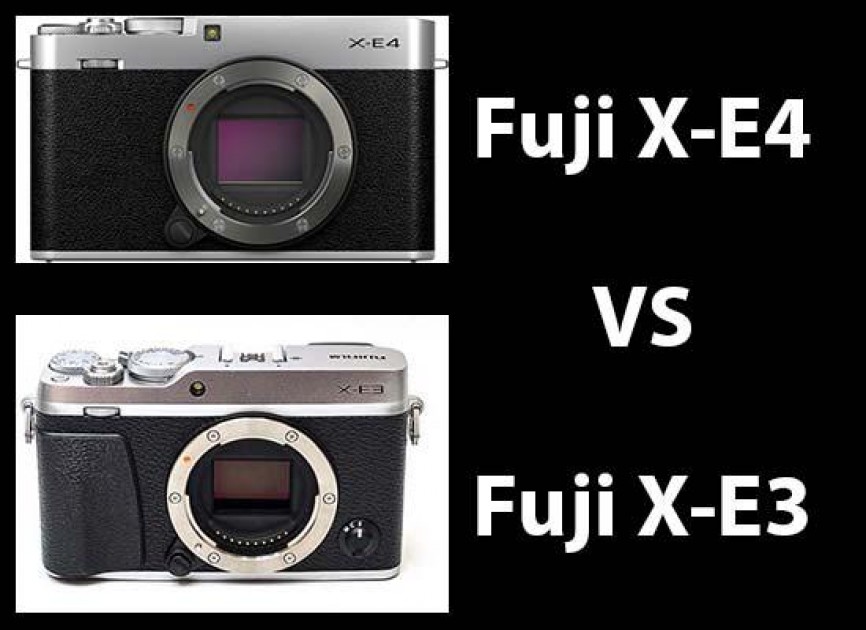Although they look quite different and occupy slightly different price-points, the cheaper Fuji XE4 and more expensive XS10 actually share a lot of similarities when it comes to their core specifications and features.
Indeed, they’re really separated by a couple of key features that the XS10 additionally has and by their very different styling, with the new X-E4 coming across like an interchangeable lens version of the rangefinder-esque X100F camera and the X-S10 instead looking very much like a mini-DSLR.
So we’re bringing you this in-depth Fujifilm X-E4 vs X-S10 head-to-head comparison to help you choose between these two mid-range APS-C sensor mirrorless cameras.
Sensor
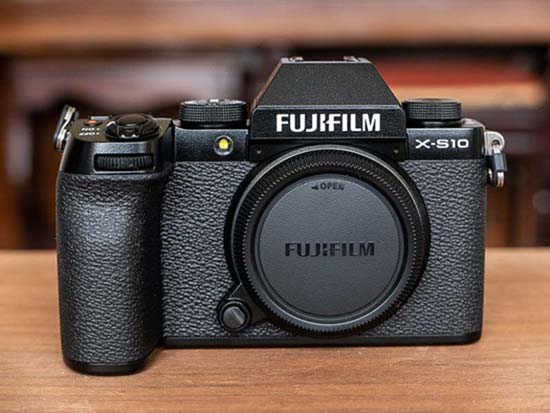
The image sensor used inside the Fuji X-E4 and the X-S10 is exactly the same – the very latest 26 megapixel APS-C sized BSI X-Trans sensor – which is also used by the range-topping X-T4 and X-Pro3 models.
All four of these cameras also share the same X-Processor 4 processor.
So now Fujifilm are offering you not one, not two, not three, but four different ways to get exactly the same image quality, all at different price-points too.
You can choose between the rangefinder design of the X-Pro3 and X-E4 or the DSLR design of the X-T4 and X-S10, and between the larger X-Pro3 and the smaller X-E4, and still get the same results.
ISO Speed
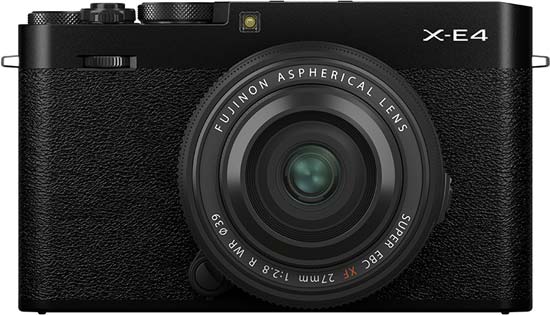
The native sensitivity range of both the XE4 and XS10 cameras is ISO 160 to ISO 12,800, which can be expanded to ISO 80 to ISO 51,200.
Video

The X-E4 and the X-S10 offer exactly the same video mode as each other.
They both feature a highest quality rate of DCI 4K/30p with no crop, recorded in 4:2:0 8-bit internally and 4:2:2 10-bit via the micro-HDMI port to an external recorder.
Both cameras have the F-Log profile, Eterna film simulation, 200Mbps bitrate and 1080p/240p 10x slow-motion mode.
There’s also a digital image stabiliser which works in conjunction with the in-camera and lens-based systems and IS Mode Boost.
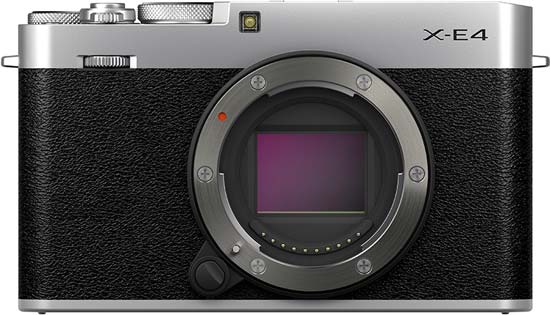
There are different Main menu and Quick menu systems for stills and video modes and a 3.5mm MIC socket and a USB-C to headphone adapter are provided in the box.
The Fujifilm X-E4 and X-S10 both support the Long GOP compression format and offer a maximum recording time of 30 minutes, which is actually 10 minutes longer than on the X-T4.
The flagship X-T4 does offer the significant advantages of 4K/60p video recorded in 4:2:0 10-bit internally, so you get both a faster maximum frame rate and a higher quality internal bit rate. It also supports the All Intra compression format in addition to Long GOP.
Autofocus
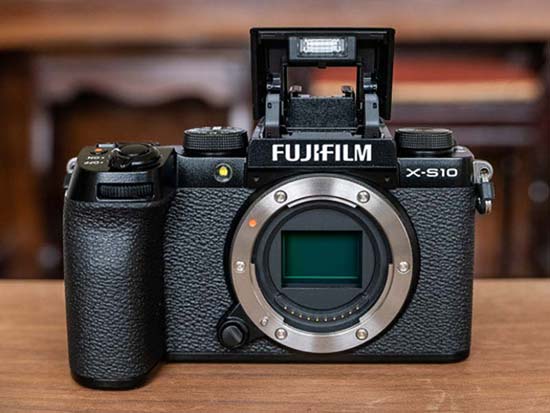
The new Fuji X-E4 has exactly the same hybrid autofocus system with phase detection and and contrast detections points as the X-S10, X-T4 and X-Pro3.
In the Single point AF mode there are up to 425 selectable AF points arranged in a 25×17 grid. Alternatively, the camera can be set to 117 points in a 13×9 grid, and the size of the points can also be varied.
In addition to Single point AF, there’s Zone AF which allows the AF points to be selected in 3×3, 5×5 or 7×7 groups, and
Wide/Tracking AF.
Burst Shooting
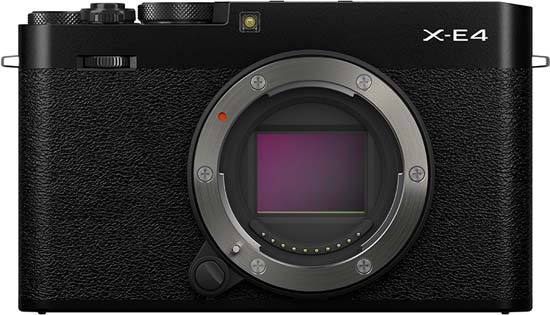
The X-E4 and X-S10 both offer a respectable 8fps continuous shooting speed when using the mechanical shutter and they can achieve 20fps when switching to the electronic shutter without any crop, or 30fps with a 1.25x crop applied.
If you want even faster burst shooting, the X-T4 takes things to a whole other level by being able to shoot at 15fps when using the mechanical shutter.
Body and Design
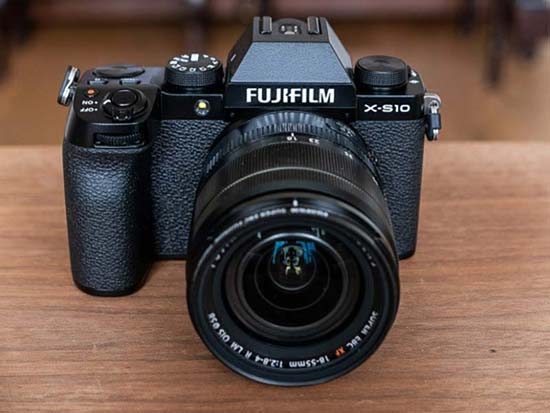
The design of the body and controls is by far the main difference between the XE4 and the XS10.
The new X-E4 is styled very much like the X100V fixed-lens compact camera, which has a retro, rangefinder look and feel to it.
It has a similarly compact, lightweight design, just with the option to being able to change the lens on the front, rather than being limited to the X100V’s fixed 35mm lens.
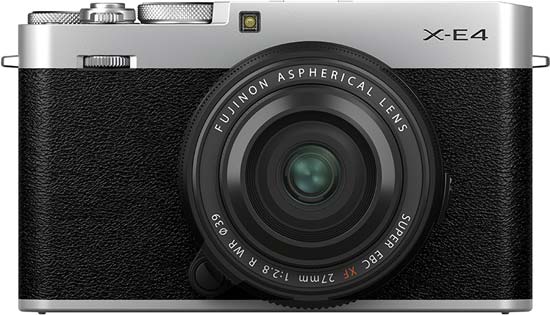
The XE4 also continues in the rich Fujifilm vein of retro-styled cameras with manual controls, with a shutter speed dial and exposure compensation dial on its top-panel.
By contrast, the DSLR-like X-S10 has large hand-grip and a simpler interface in order to try and make it more appealing to less experienced users.
If you’ve ever considered a Fujifilm camera but been put of by its plethora of manual controls, then the XS10 will certainly be more up your street than the XE4.

Instead of the Shutter Speed dial and Exposure Compensation dial found on top of the X-E4, there’s just a customisable Function dial on the left and shooting mode dial on the right of the top of the XS10.
The rear control layouts of the X-E4 and the X-S10 are both similarly quite simple and uncluttered, though, with the traditional D-pad completely disappearing in favour of a more touchscreen reliant interface and thumb-operated joystick.
The new X-E4 is quite a lot lighter than the X-S10 – at 365g, it undercuts its more expensive sibling by a whopping 100g.

By way of redress, the X-S10 does have an appealingly large handgrip that makes the camera secure to hold even one-handed.
In contrast, the X-E4 has a completely flat, albeit textured, front that’s more difficult to get a grip on.
There is an optional new metal hand-grip for the X-E4 (cunningly called the MHG-XE4), but that obviously adds extra cost, weight and complexity.
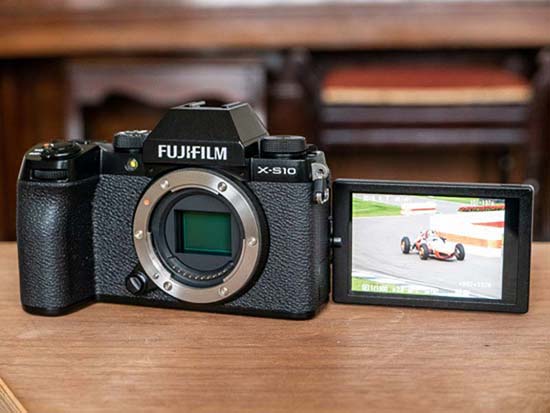
An added bonus on the X-S10, for some people at least, is the inclusion of a built-in pop-up flash, something that the X-E4 doesn’t have.
The only main concession to the more aggressive price-point of both models from a build quality point of view is the complete lack of any weather-sealing.
If this is a must-have feature, then you’ll need to step-up to the flagship X-T4 camera.
IBIS
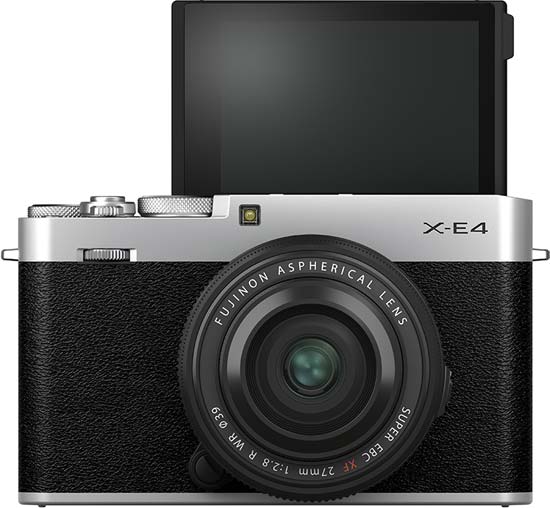
This is one of the other main key differences between the two cameras.
The XS10 was the third Fujifilm camera to feature 5-axis in-body image stabilisation (IBIS), following the X-H1 and the X-T4.
The new X-E4 does not follow suit – with no in-body stabilisation system on-board, it relies instead on the lens to supply this feature, which is less effective than a dual body/lens combination.
So if you really want to have IBIS or the most effective stabilisation system overall, the X-S10 is the camera to go for out of these two models.
Viewfinder
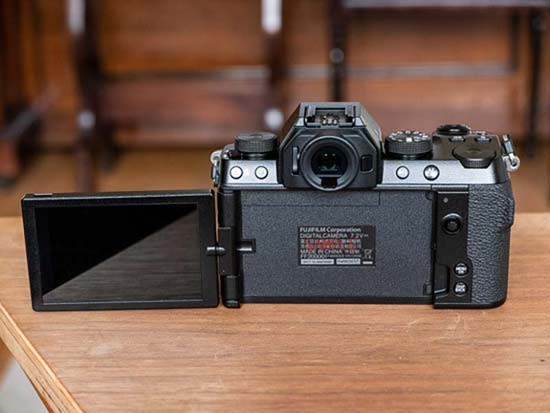
The X-E4 and X-S10 both have the same 2.36M-dot OLED electronic viewfinder with 0.62x magnification, 100fps refresh rate and a built-in eye sensor.
LCD Screen
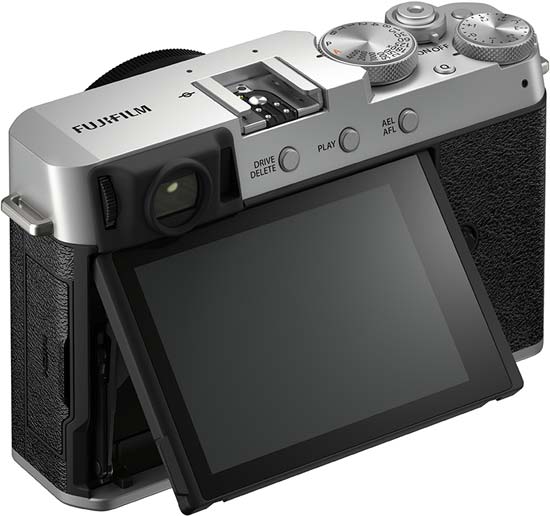
These two Fujifilm cameras take a markedly different approach to the design of their rear LCD screens.
The new X-E4 has a 3-inch LCD screen that can be tilted forwards by 180-degrees, which makes it ideal for vlogging and taking selfies.
In contrast, the X-S10 has an even more versatile, fully articulating vari-angle 3-inch LCD screen.
You can flip-out the screen to the side, rotate it forwards for easier operation when pointing the camera at yourself, and fold it flat against the back of the camera to stop it from getting scratched.
This free-angle design proves to be a very versatile screen for vlogging, movie shooting and photography in general.
Somewhat surprisingly, the resolution of the screen is actually better on the cheaper X-E4. It has 1.62M-dots versus the 1.04M-dot screen on the X-S10.
Memory Cards

Perhaps unsurprisingly given the smaller, more compact size of the X-E4 and the X-S10, they only have a single memory card slot, rather than the X-T4’s dual card slots.
On the XE4 and XS10, the memory card slot is next to the battery in a shared compartment on the bottom of the camera, which is less convenient, especially when the camera is mounted on a tripod.
The single memory card slot is also less flexible and offers less peace of mind than the dual slots on the XT4.
Battery Life
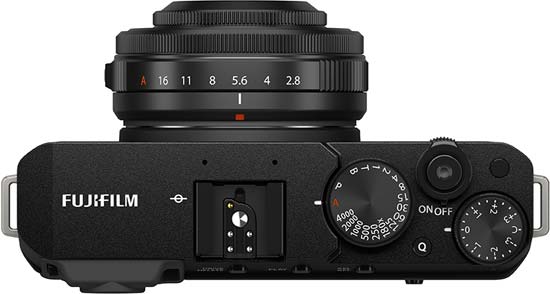
The Fujifilm X-E4 uses exactly the same NP-W126S battery as the X-S10 model, rather than the larger capacity NP-W325 battery used by the X-T4.
The NP-W126S offers a CIPA-rated battery life of up to 500 shots on a single charge in normal mode and 600 shots in the ‘economy’ mode.
Both the XE4 and XS10 can also be powered and charged via a USB-C connection, which is useful if you’re out and about and have a compatible powerbank to plug the camera into.
Kit Lens
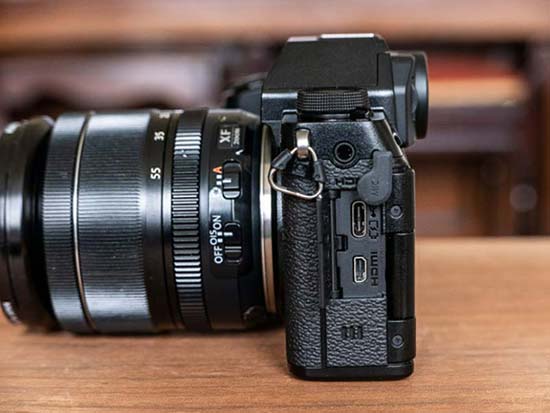
In terms of kit lenses, the X-S10 can be bought with either the cheaper XC 15-45mm F3.5-5.6 OIS PZ, the usual XF 18-55mm f/2.8-4.0 OIS, or the more expensive XF 16-80mm f/4 R LM OIS WR.
Reflecting its street photography leanings, in contrast the new X-E4 can only be purchased in kit form with the new XF 27mm F2.8 R WR prime lens, so you actually get more choice of kit lenses with the XS10.
Both cameras can also be purchased body-only too if you already have a bag full of Fuji lenses.
Price
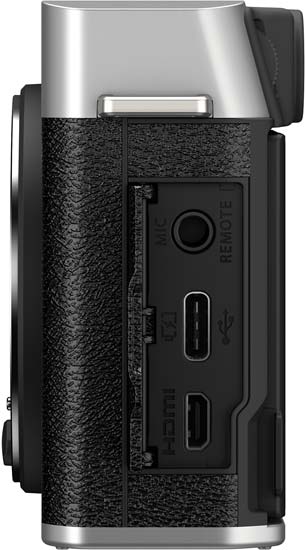
In the UK the Fujifilm X-E4 costs £799 body only or £949 with the XF 27mm F2.8 R WR lens.
The Fujifilm X-S10 costs £949 body only, £999 with the XC 15-45mm lens, £1299 with the XF 18-55mm lens, or £1399 with the XF 16-80mm lens.
The flagship Fujifilm X-T4 costs £1,549 body only, almost double the price of the X-E4, or £1,899 with the XF 18-55mm lens, or £1,949 with the XF 16-80mm lens.
Conclusion
With the launch of the Fujifilm X-E4, you can now buy a camera that commendably offers exactly the same still image quality and auto-focusing system as the flagship X-T4 and X-Pro3 cameras, just for almost half the price.
The slightly more expensive X-S10 sits above the XE4 and also features the same sensor, processor and AF module, so there are now four differently priced models in the X-system that deliver the best image quality that Fujifilm’s APS-C range currently offers.
Choosing between the new X-E4 and the X-S10 largely comes down to personal preference about styling, handling and the control layout.
The XE4 is very much a classic Fujifilm camera, with traditional external controls and a rangefinder-esque design that closely mimics the X100F fixed-lens compact.
The X-S10, on the other hand, is quite a radical departure from the usual Fuji blueprint, eschewing the shutter speed and exposure compensation dials in favour of a PASM dial (gasp!), as well as sporting a more mini-DSLR design.
Its large hand-grip makes it better suited for use with the larger X-series lenses, whilst the flat front of the X-E4 makes it a better-balanced match for Fuji’s excellent range of smaller prime lenses.
There are also some key features that the X-S10 has which the X-E4 lacks, most notably in-body image stabilisation (IBIS), a built-in pop-up flash, a more versatile flip-out LCD screen, and more kit lens options.
Strangely, the cheaper X-E4 does benefit from having a higher-resolution LCD screen and it’s 100g lighter than the X-S10, as well as its main advantage of being truly pocketable.
So what do you think? Would you choose the new Fuji X-E4 or the X-S10? Leave a comment below!

